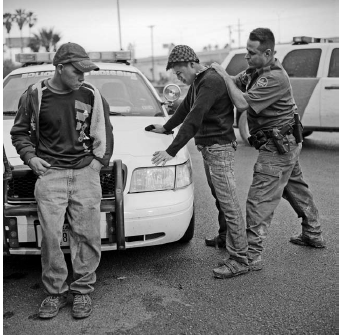By Susan J. Terrio, author of Whose Child Am I?: Unaccompanied, Undocumented Children in U.S. Immigration Custody

Academics, advocates and legal scholars here and abroad expressed alarm at the campaign rhetoric of then presidential candidate Donald Trump, who promised to build a wall on our southern border to keep out “illegals,” to ban Muslims and to create a federal registry to track them, to end humanitarian protections for undocumented youths brought to this country as children, and to round-up and deport 1.9 million unauthorized immigrants. Now in office, Trump is delivering on those promises with a rash of executive orders fueled by his own vision of the nation and a false sense of urgency regarding the threats posed by foreign workers, criminal aliens, and Muslim terrorists.
I wrote Whose Child Am I? to emphasize the dangers of creating two parallel but separate federal systems to manage the increasing numbers of unaccompanied, undocumented Central American and Mexican children who were apprehended by U.S. immigration authorities after fleeing violence at home: preemptive detention in closed facilities and monitored programs and placement in deportation proceedings in immigration courts. I also noted the conflict of interest created when one branch of the government assigns itself as a child’s legal guardian while another branch prosecutes that same child for violating immigration law. Undocumented children currently have no right to funded legal representation in court and are subject to arbitrary placement and release decisions while in custody. The limited rights and humanitarian safeguards they enjoy in federal detention are offset by due process violations, detention with no set endpoint, limited access to pro bono attorneys, and the fear of deportation after release.
 As my book was going to press in 2014, migratory flows of unaccompanied children and undocumented families from Central America exploded. We witnessed desperate migrants running to, not away from, Border Patrol agents. The U.S. has treated this violence-driven refugee crisis as if it were an economic migration problem. The Obama administration responded to the arrival of unprecedented numbers of undocumented children and families with enhanced enforcement and heightened deterrence policies designed to prevent their entry and to remove them rapidly. These included expedited processing that stripped them of basic constitutional protections and exposed them to abuse, the outsourcing of the violent interdiction, detention and deportation of Central Americans to Mexico and Guatemala, and the rapid expansion of detention facilities in the U.S. for both unaccompanied minors and families with children. Despite these policies, in 2016, a record number of unaccompanied minors crossed the border and were detained-77,674.
As my book was going to press in 2014, migratory flows of unaccompanied children and undocumented families from Central America exploded. We witnessed desperate migrants running to, not away from, Border Patrol agents. The U.S. has treated this violence-driven refugee crisis as if it were an economic migration problem. The Obama administration responded to the arrival of unprecedented numbers of undocumented children and families with enhanced enforcement and heightened deterrence policies designed to prevent their entry and to remove them rapidly. These included expedited processing that stripped them of basic constitutional protections and exposed them to abuse, the outsourcing of the violent interdiction, detention and deportation of Central Americans to Mexico and Guatemala, and the rapid expansion of detention facilities in the U.S. for both unaccompanied minors and families with children. Despite these policies, in 2016, a record number of unaccompanied minors crossed the border and were detained-77,674.
The large-scale detention and deportation regime can only be expected to continue as Trump’s recent executive orders call for a border wall, robust collaboration between local and federal authorities to round up and deport undocumented immigrants, sanctions against sanctuary cities, and tougher procedures for admitting refugees. We would do well to remember the terrible costs of vicious nativism and anti-immigrant rhetoric in our history. We need to use verifiable facts to expose the Trump administration’s exaggerated threats that justify increasingly restrictive policies and muscular border control.
 Susan J. Terrio is is Professor of Anthropology at Georgetown University. In addition to Whose Child Am I?, she is also the author of Judging Mohammed: Juvenile Delinquency, Immigration, and Exclusion at the Paris Palace of Justice.
Susan J. Terrio is is Professor of Anthropology at Georgetown University. In addition to Whose Child Am I?, she is also the author of Judging Mohammed: Juvenile Delinquency, Immigration, and Exclusion at the Paris Palace of Justice.

